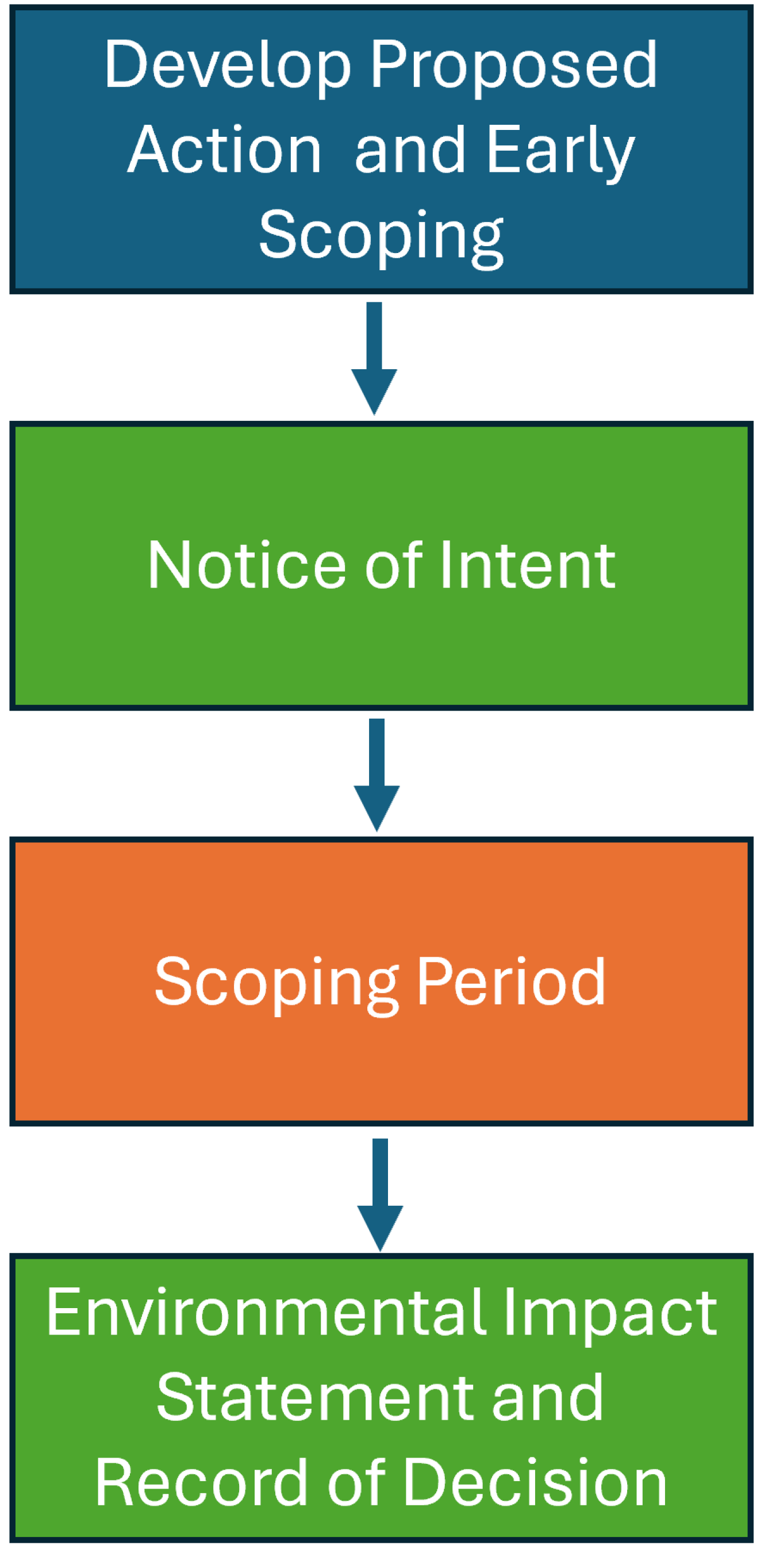An environmental impact statement (EIS) is a “detailed statement” prepared when DOE determines that a proposed action will have “a reasonably foreseeable significant effect on the quality of the human environment” (NEPA Section 106).
DOE will publish a “concise notice of intent (NOI) to prepare an environmental impact statement as soon as practicable after determining that an environmental impact statement is required for a proposed agency action.” (NEPA Implementing Procedures Section 7.1). The NOI includes a request for public comment and provides for a public scoping period (NEPA Implementing Procedures Section 7.1). After comments are received, reviewed and considered, DOE may develop an EIS and Record of Decision (ROD).

Under NEPA Section 102, an EIS must analyze and disclose:
- reasonably foreseeable environmental effects of the proposed agency action;
- any reasonably foreseeable adverse environmental effects which cannot be avoided should the proposal be implemented;
- a reasonable range of alternatives to the proposed agency action, including an analysis of any negative environmental impacts of not implementing the proposed agency action in the case of a no action alternative, that are technically and economically feasible, and meet the purpose and need of the proposal;
- the relationship between local short-term uses of man’s environment and the maintenance and enhancement of long-term productivity; and
- any irreversible and irretrievable commitments of Federal resources that would be involved in the proposed agency action should it be implemented.
An EIS shall not exceed 150 pages (except for a proposed action of extraordinary complexity, in which case the EIS shall not exceed 300 pages), not including any citations or appendices (NEPA Section 107(e)(1)) and be completed in no more than two years (NEPA Section 107(g)(1)(a)).
DOE publishes the NOI, EIS, and ROD to its NEPA website. EPA publishes a Notice of Availability for each EIS in the Federal Register.
See the Office of Environmental Management’s EISs, including associated NOIs, NOAs, and RODs.

